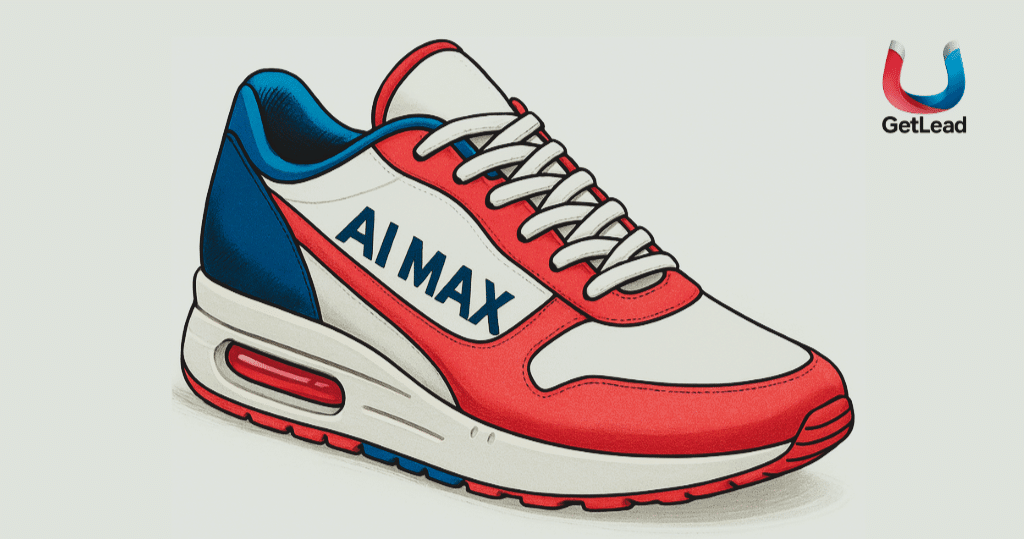AI Max: The End of Keywords in Search Ads?

Google unveiled AI Max for Search during Google Marketing Live 2025 — and in the weeks since, we’ve had the same conversation over and over again:
“What does this actually mean for Google Ads?”
Some say it’s the end of keyword targeting. Others say it’s nothing new.
The reality? Somewhere in between.
Here’s what you need to know:
What is AI Max for Search?
AI Max is a new opt-in feature currently in beta (with broader rollout underway). It enhances your existing Search campaigns using Google’s AI.
There’s no need to start a new campaign — you simply activate it within your existing structure.
It adds three powerful features:
- Broader query matching, including searches beyond your keyword list
- Automatically generated ad copy based on user intent and live context
- Final URL Expansion, where Google selects the most relevant landing page — exclusions optional
Each feature is optional and can be toggled on or off.
Why it Matters
This isn’t just a technical upgrade — it reflects a deeper shift in how Google approaches search:
From keywords → intent.
Search queries are getting longer and more natural. Relying solely on exact or phrase match won’t be enough going forward.
To succeed with AI Max, marketers need a hybrid approach:
- Track conversions reliably (your PPC foundation)
- Make sure your website is clear, fast, and easy for Google to understand — both for people and for its AI
- Structure campaigns around intent, not just keyword clusters
AI Max is turning traditional Search into something much closer to Paid SEO.
Should You Use It?
Yes — but test carefully.
Start with campaigns that can tolerate some experimentation. Keep your high-performing structures separate. Use your own data to judge performance.
Industries with strict compliance needs (health, legal, finance) should be especially cautious. While control is better than in Performance Max, it’s still far from perfect.
Google says reporting is improving — better query insights, better location reporting — but transparency gaps remain.
How does AI Max compare to DSA and PMax?
If you’re wondering how AI Max for Search stacks up against Dynamic Search Ads (DSA) or Performance Max (PMax) — you’re not alone.
Here’s a quick breakdown:
- Dynamic Search Ads use your website content to match queries, but rely heavily on crawlable pages and offer limited creative flexibility. You can’t add keywords — Google decides what’s relevant based on your site.
- AI Max for Search builds on that logic but adds real-time AI enhancements. It uses your landing pages, ad copy, and keyword intent to match broader queries, generate new headlines/descriptions, and even select different URLs — with more control than DSA and clearer reporting than PMax.
- Performance Max is broader still: it covers multiple Google channels (Search, Display, YouTube, Gmail, etc.), uses fully automated asset selection, and traditionally offered the least transparency in terms of targeting and placements. That said, transparency has improved recently with the introduction of Channel Reporting for PMax — a welcome step in the right direction.
In short:
- DSA is page-based and reactive
- AI Max is search-first and intent-based, but more transparent
- PMax is multi-channel and goal-driven, but less controllable
AI Max aims to offer a middle ground — combining automation with advertiser input — and could very well become the future standard for non-brand search.
The Bigger Picture
Google’s introduction of AI Max for Search is not an isolated update; it’s a significant step in a broader transformation towards intent-based search and AI-driven user interactions.
Traditionally, search advertising has relied heavily on exact keyword matches. However, with the advent of AI technologies, users are now engaging with search engines using more natural, conversational language. This shift necessitates a move from rigid keyword strategies to more flexible, intent-focused approaches.
AI Max exemplifies this transition by leveraging machine learning to understand and predict user intent, even when it’s not explicitly stated. This allows advertisers to reach potential customers through a more nuanced understanding of their search behavior, enhancing the relevance and effectiveness of ads.
Moreover, features like AI Overviews and AI Mode in Google’s search platform further illustrate this evolution. These tools provide users with comprehensive, AI-generated responses to their queries, reducing the reliance on traditional link-based search results.
For advertisers, this means adapting to a landscape where understanding user intent is paramount. Success in this new environment requires a blend of traditional SEO practices and advanced AI-driven strategies to meet users where they are in their search journey.
Final Thought
So — is AI Max the end of keywords in Search Ads?
Not yet.
But it’s the beginning of the end as we know them.
Keywords aren’t gone, but their role is evolving fast. AI Max marks a shift from precision targeting to intent understanding. The more natural and complex our searches become, the more we’ll rely on AI — not just keywords — to connect people with answers.
The keyword isn’t dead — it’s just no longer the main character. Intent is taking the lead.
And winning in AI-powered search?
It’s not about choosing between PPC and SEO.
It’s about learning how to play both games — at once.